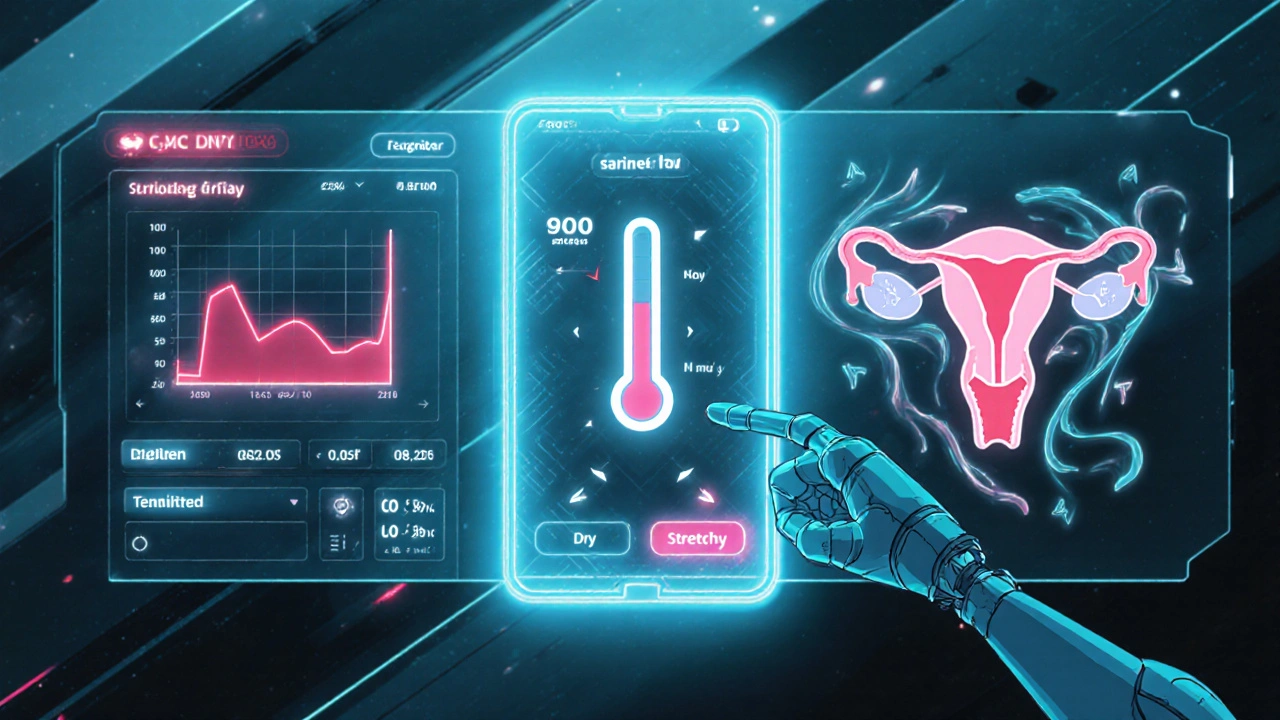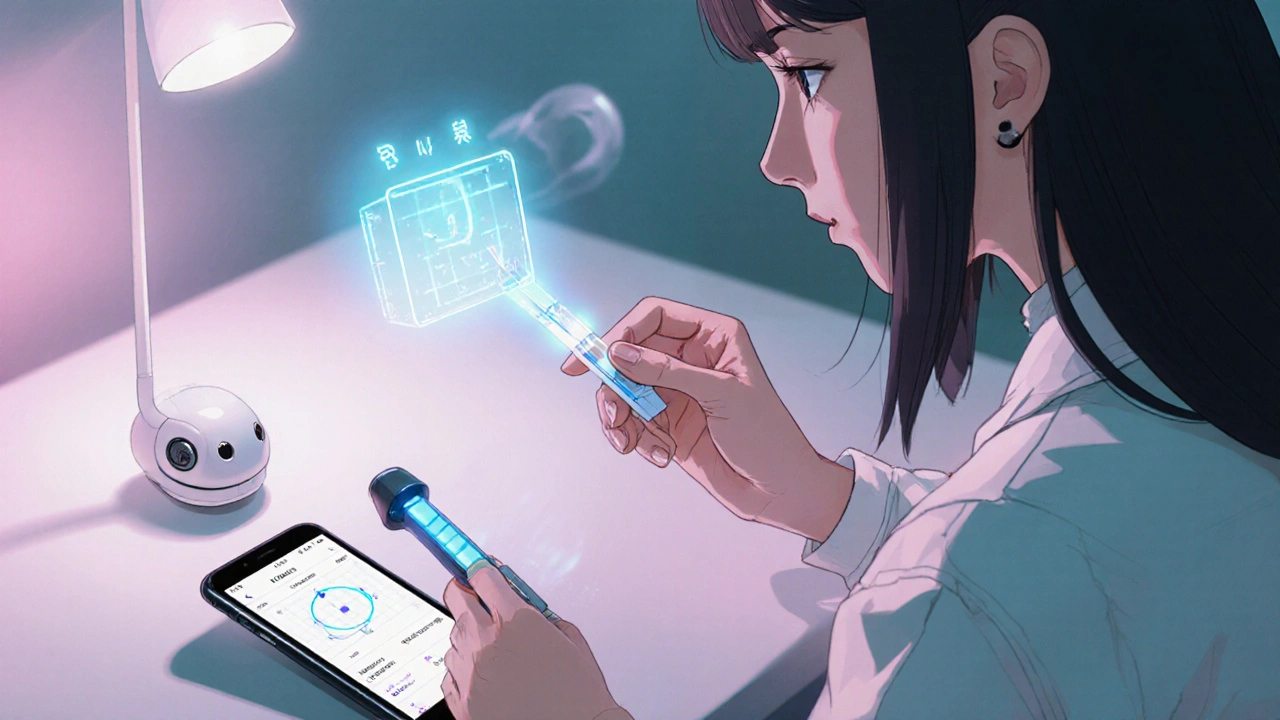Ovulation Calculator
Find Your Fertile Window
Enter your cycle information to see when your fertile window is most likely to occur. This tool uses standard fertility tracking methods discussed in the article.
Your Fertile Window
Your most fertile day is typically 14 days after your last period start.
Note: This is a general estimate based on standard fertility tracking methods. For better accuracy, consider using an ovulation test app as described in the article.
Trying to pinpoint the most fertile days can feel like guesswork, but ovulation test apps are changing the game. By blending hormone data, temperature readings, and smart algorithms, they give you a clearer picture of your cycle without the hassle of paper charts.
What Exactly Is an Ovulation Test App?
Ovulation Test Apps are mobile applications that collect, interpret, and display fertility‑related signals to help users identify their fertile window. They pull data from digital ovulation test kits, wearables, or manual entry, then apply proprietary algorithms to forecast when ovulation is most likely.
How Do They Work? The Biology Behind the Numbers
Luteinizing Hormone (LH) is the hormone that spikes right before an egg is released. Most ovulation test apps start with an LH surge reading from a compatible digital strip. Some apps also accept Basal Body Temperature (BBT) inputs, which typically rise a few tenths of a degree after ovulation. By cross‑referencing LH and BBT trends, the app can confirm that ovulation has occurred.
Another physiological clue is Cervical Mucus consistency. Many apps let you log mucus observations - from dry to stretchy - and weigh that data against hormone results. When multiple markers line up, the app highlights the day as part of the Fertility Window, usually a six‑day span that includes the day of LH surge and the days surrounding it.
Key Benefits Over Traditional Methods
- Higher Accuracy: Digital LH strips paired with algorithmic analysis cut false‑positive rates compared to urine test strips alone.
- Convenient Data Sync: Automatic upload from Bluetooth‑enabled devices eliminates manual transcription errors.
- Personalized Insights: Apps learn your cycle length, hormone patterns, and temperature baseline, offering custom predictions.
- Privacy‑Centric Design: Modern apps encrypt data, let you control sharing settings, and often comply with GDPR or Australian Privacy Principles.
- Holistic Tracking: Beyond ovulation, many apps let you log mood, sleep, and nutrition, helping you see how lifestyle influences fertility.

Choosing the Right App - What to Look For
Not every app is built equal. Here’s a quick checklist to help you decide:
- Device Compatibility: Does it work with the digital test strips or wearables you already own?
- Algorithm Transparency: Look for apps that cite clinical validation studies or publish their prediction accuracy.
- Data Privacy: Verify encryption standards and whether the app stores data on local devices versus cloud servers.
- User Interface: A clean, intuitive UI reduces the learning curve and encourages daily logging.
- Cost Structure: Many apps have a free tier with basic LH tracking; premium plans may unlock BBT integration, AI‑driven insights, and ad‑free experience.
Top Ovulation Test Apps in 2025
| App | Free Version | LH Detection Method | Data Sync | Privacy Rating |
|---|---|---|---|---|
| FertileCycle | Yes - basic LH tracking | Bluetooth digital strip | iOS, Android, Wearable | AA (AES‑256 encryption) |
| OvulMate | No - 7‑day trial only | Manual entry + AI prediction | Apple Health, Google Fit | A (GDPR compliant) |
| CycleSense Pro | Yes - limited BBT logs | Integrated digital test kit | Cloud sync with end‑to‑end encryption | AA |
Best Practices for Accurate Tracking
- Test LH at the same time each morning for consistency.
- Keep your digital strip sensor clean and store it according to manufacturer guidelines.
- If you use BBT, measure immediately after waking, before any activity.
- Log cervical mucus observations daily - even “dry” days matter.
- Review the app’s predictions weekly and adjust if your cycle length varies.
Real‑World Success Stories
Emma, a 32‑year‑old teacher from Melbourne, struggled with irregular cycles for years. After switching to a digital LH strip paired with FertileCycle, she logged a clear surge on day 14 and timed intercourse accordingly. Within three months, she conceived naturally, crediting the app’s precise alerts for eliminating the guesswork.
Another case involved a couple using a wearable‑based app that merged LH, BBT, and sleep data. The app’s AI highlighted a subtle temperature dip a day before the LH peak, giving them an extra fertile day that proved decisive.
Future Trends - Where Are Ovulation Test Apps Heading?
Upcoming developments include integration with Mobile Health (mHealth) platforms that pull hormone data directly from at‑home biosensors, eliminating the need for separate strips. AI models trained on millions of cycles aim to predict ovulation up to a week in advance, giving users a longer planning horizon. Expect tighter privacy controls as regulations tighten, with more apps offering on‑device processing to keep data out of the cloud.
Quick Reference Checklist
- Confirm app syncs with your chosen LH test device.
- Check for clinical validation or published accuracy rates.
- Review privacy settings - opt for local storage if possible.
- Start logging consistently at least two cycles before relying on predictions.
- Use the app’s insights alongside regular medical advice.
Can I use an ovulation test app without a digital LH strip?
Yes. Some apps let you manually enter results from traditional urine strips, while others rely on BBT or cervical mucus patterns alone. Accuracy may be lower, but the app can still highlight likely fertile days.
How secure is my fertility data?
Reputable apps use AES‑256 encryption, offer two‑factor authentication, and let you control who sees your data. Look for GDPR or Australian Privacy Principle compliance in the app’s privacy policy.
Do ovulation test apps work for irregular cycles?
They can, but you’ll need to log more data points (LH, BBT, mucus) over several cycles. The app’s algorithm learns your unique pattern and improves predictions over time.
Is there a risk of over‑reliance on the app?
Apps are tools, not medical diagnoses. Always discuss any fertility concerns with a healthcare professional, especially if you have underlying conditions.
What’s the average cost of a premium ovulation test app?
Subscriptions typically range from $4.99 to $9.99 per month, often with discounts for annual plans. Some apps offer a one‑time purchase for lifetime access.

eric smith
Oh wow, another miracle app that promises to read your hormones better than your own body. Let me guess, it also tells you the winning lottery numbers while it’s at it?
Casey Cloud
First, make sure you actually sync the digital strip via Bluetooth every time you test. The app will not magically guess the LH surge if the data never reaches it. Second, log your basal body temperature as soon as you’re out of bed, before you even move. A few minutes matter because even a slight activity will raise the reading. Third, record cervical mucus every day, even the days that feel dry or unimportant. Those observations feed the algorithm a secondary confirmation point. Fourth, keep the app’s privacy settings on high; enable local storage if the option exists and turn off cloud sync unless you trust the provider. Fifth, avoid using the app as the sole method if you have irregular cycles – supplement with a clinician‑guided ultrasound when possible. Sixth, use the built‑in reminders to test at the same hour each morning; consistency beats occasional brilliance. Seventh, don’t ignore the app’s notifications – they often flag a potential surge that can be missed by a casual glance. Eighth, compare the app’s prediction with your own basal observations; discrepancies can reveal sensor drift. Ninth, understand that predictive models improve after two to three cycles of data, so give it time before drawing conclusions. Tenth, stay aware of firmware updates for your digital strip reader; a simple bug can throw off hormone detection. Eleventh, if the app offers a premium feature for AI‑driven forecasts, read the validation study linked in the settings page. Twelfth, remember that no app replaces a medical professional’s advice, especially if you have underlying health conditions. Thirteenth, backup your data periodically if you rely on cloud storage. Fourteenth, be skeptical of any claim that the app can predict ovulation a week in advance without extensive data inputs. Fifteenth, most importantly, keep a balanced perspective – the technology is a tool, not a crystal ball.
John Price
Test at the same time each day.
Jake Hayes
If you’re not reading the fine print, you’re basically gambling with your reproductive health.
Rachel Valderrama
Sure, because nothing says “romantic” like staring at a blinking graph while you’re trying to be intimate.